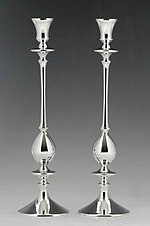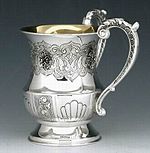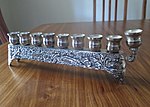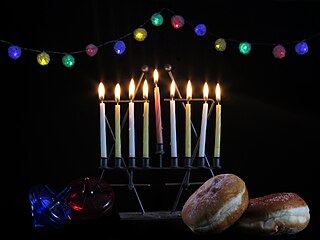
Hanukkah is a Jewish festival commemorating the recovery of Jerusalem and subsequent rededication of the Second Temple at the beginning of the Maccabean Revolt against the Seleucid Empire in the 2nd century BCE.

Shabbat or the Sabbath, also called Shabbos by Ashkenazim, is Judaism's day of rest on the seventh day of the week—i.e., Saturday. On this day, religious Jews remember the biblical stories describing the creation of the heaven and earth in six days and the redemption from slavery and the Exodus from Egypt, and look forward to a future Messianic Age. Since the Jewish religious calendar counts days from sunset to sunset, Shabbat begins in the evening of what on the civil calendar is Friday.

The Haggadah is a Jewish text that sets forth the order of the Passover Seder. According to Jewish practice, reading the Haggadah at the Seder table is a fulfillment of the mitzvah to each Jew to tell their children the story from the Book of Exodus about God bringing the Israelites out of slavery in Egypt, with a strong hand and an outstretched arm.

Havdalah is a Jewish religious ceremony that marks the symbolic end of Shabbat and ushers in the new week. The ritual involves lighting a special candle with several wicks, blessing a cup of wine, and smelling sweet spices. Shabbat ends on Saturday night after the appearance of three stars in the sky. Havdalah may be performed as late as sunset of the Tuesday following Shabbat. Havdalah is also recited at the conclusion of the biblical holidays.

Kiddush, literally, "sanctification", is a blessing recited over wine or grape juice to sanctify the Shabbat and Jewish holidays. Additionally, the word refers to a small repast held on Shabbat or festival mornings after the prayer services and before the meal.
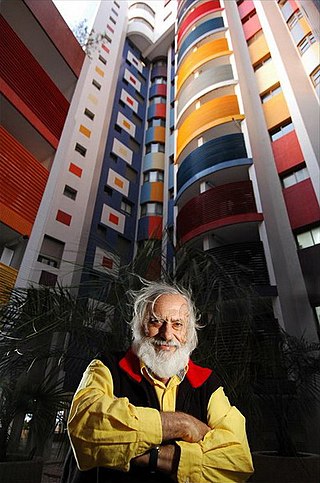
Yaacov Agam is an Israeli sculptor and experimental artist widely known for his contributions to optical and kinetic art.

A Hanukkah menorah, or hanukkiah, is a nine-branched candelabrum lit during the eight-day Jewish holiday of Hanukkah. Eight of the nine branches hold lights that symbolize the eight nights of the holiday; on each night, one more light is lit than the previous night, until on the final night all eight branches are ignited. The ninth branch holds a candle, called the shamash, which is used to light the other eight.

Jewish art, or the art of the Jewish people, encompasses a diverse range of creative endeavors, spanning from ancient Jewish art to contemporary Israeli art. Jewish art encompasses the visual plastic arts, sculpture, painting, and more, all influenced by Jewish culture, history, and religious beliefs.
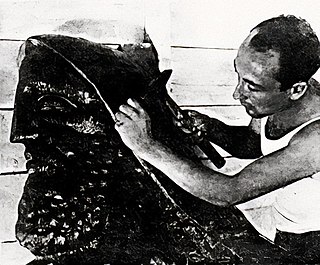
Maurice Ascalon was an Israeli designer and sculptor. He was, by some accounts, considered the father of the modern Israeli decorative arts movement.

Ze’ev Raban (22 September 1890 – 19 January 1970), born Wolf Rawicki (Ravitzki), was a leading painter, decorative artist, and industrial designer of the Bezalel school style, and was one of the founders of the Israeli art world.
A Hanukkah stamp is a holiday stamp issued to commemorate Hanukkah. Since 1996, several Hanukkah-themed postage stamps have been issued, often jointly.

The Musée d'Art et d'Histoire du Judaïsme or mahJ is the largest French museum of Jewish art and history. It is located in the Hôtel de Saint-Aignan in the Marais district in Paris.

The Derfner Judaica Museum is a cultural and educational center that provides exhibitions relating to Jewish history and contemporary Jewish culture. The museum is located in the Jacob Reingold Pavilion on the grounds of The Hebrew Home at Riverdale in the Riverdale neighborhood of the Bronx in New York City.
Various numbers play a significant role in Jewish texts or practice. Some such numbers were used as mnemonics to help remember concepts, while other numbers were considered to have intrinsic significance or allusive meaning.
The Lindo lamp is a silver Chanukah menorah. It is the oldest known example of a Chanukah menorah made in Britain.

David Heinz Gumbel (1906–1992) was an Israeli designer and silversmith, born in Germany.
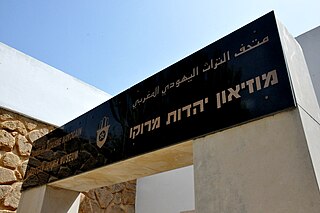
The Museum of Moroccan Judaism is a museum of Jewish life in Morocco in Casablanca, Morocco.
Objects used in Jewish rituals are known collectively as Judaica. The conservation and restoration of Judaica takes into account the collective body of Jewish religious laws derived from the written and oral Torah known as halacha in order to properly care for these materials. This work involves identifying these objects and therefore knowing how any of these objects are traditionally handled, stored, exhibited, and generally cared for based on their use and significance.

"Menorah: Worship, History, Legend" is a 2017 museum exhibition sponsored jointly by the Vatican Museums and the Jewish Museum of Rome.
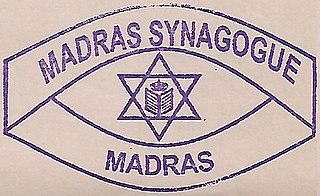
The Madras Synagogue is the only synagogue in Chennai and it was built by Jacques (Jaime) de Paiva (Pavia) a Paradesi Jew of Chennai. Madras Synagogue was also known as the Esnoga, or Snoge, Esnoga is synagogue in Ladino, the traditional Judaeo-Spanish language of Sephardic Jews.

